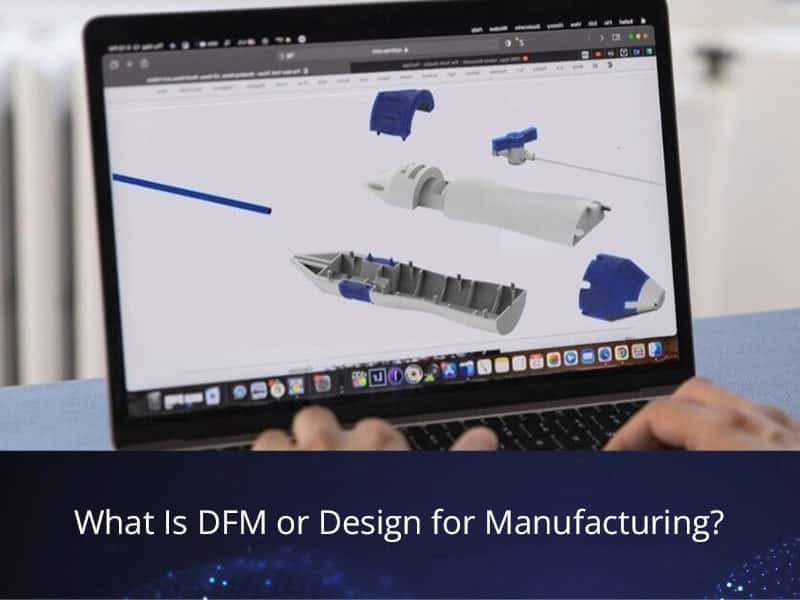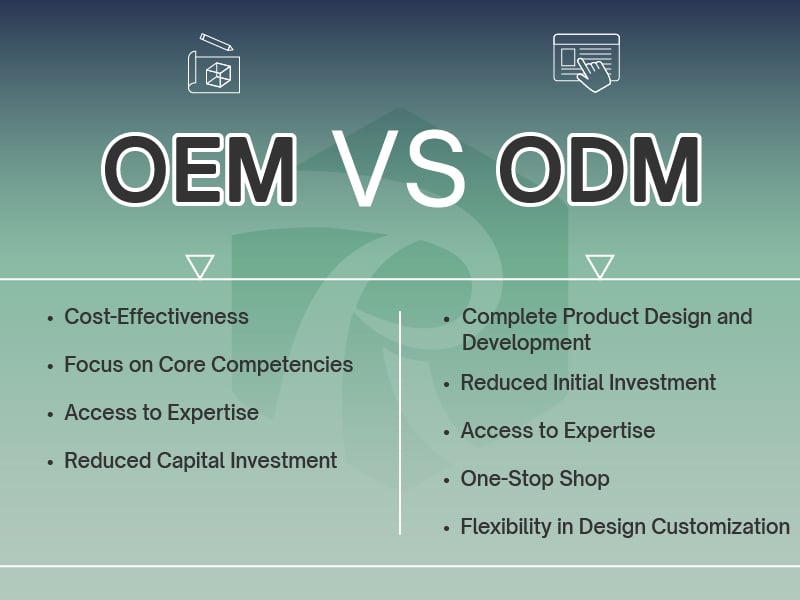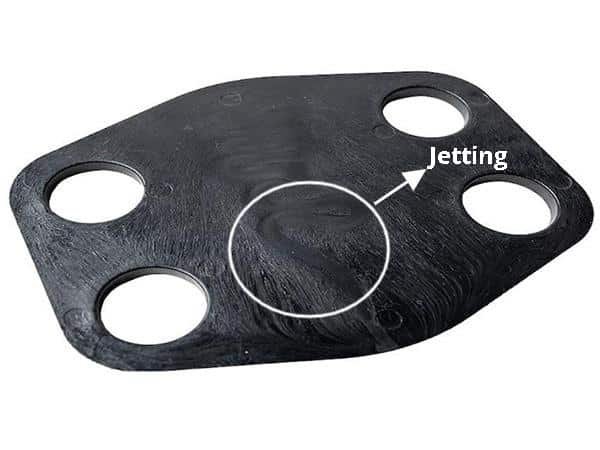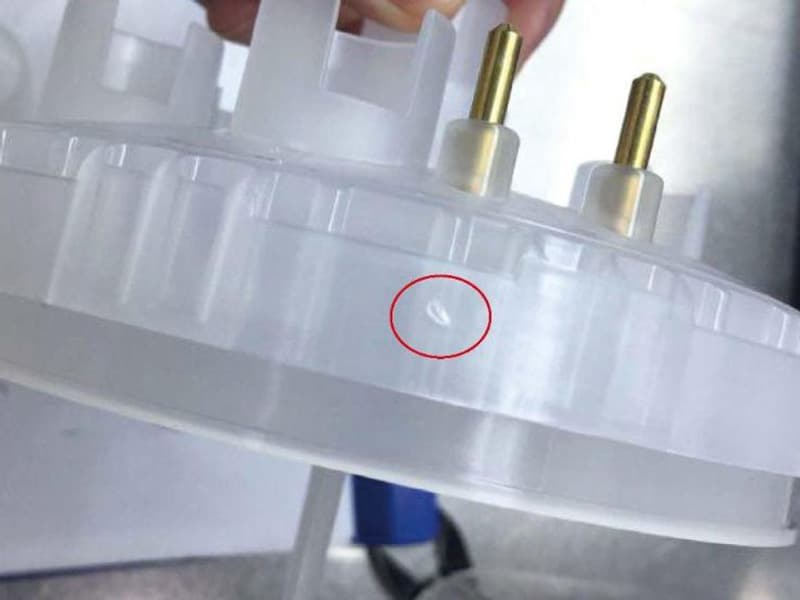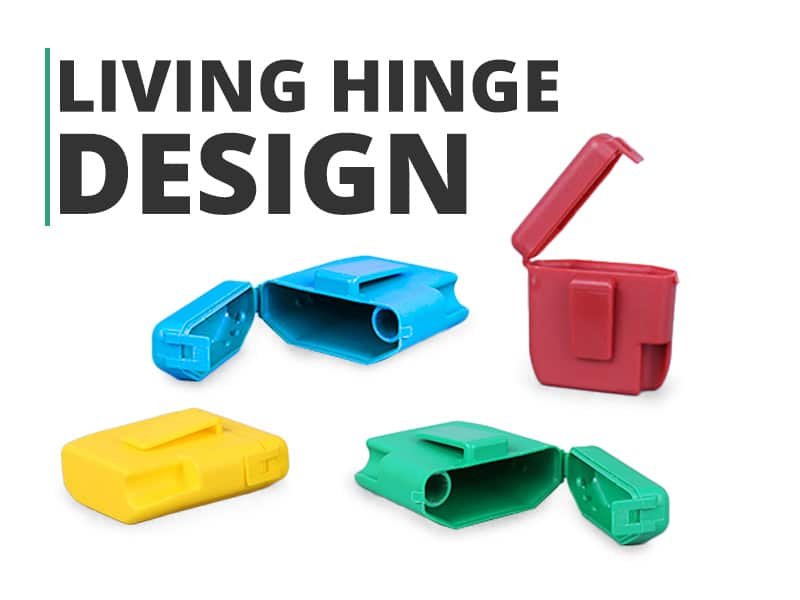Design for manufacturing is the key to transforming a great concept into a cost-effective, high-quality product. By optimizing the DFM process, manufacturers can reduce production complexities, minimize waste, and enhance overall efficiency. From material selection to compliance testing, every aspect of DFM design for manufacturing ensures that products are not only functional but also scalable for mass production. Understanding what DFM is and how it impacts production can lead to better decision-making, lower costs, and improved product performance.
What is DFM
Design for Manufacturing (DFM) is the art and science of designing products with the ease and efficiency of manufacturing in mind. It’s a proactive approach that considers every aspect of the production process, from material selection and component design to assembly methods and tooling, right from the initial design stages. The goal? To create products that are not only functional and aesthetically pleasing but also cost-effective and straightforward to produce.
Think of it as building a house with the construction crew in mind. You wouldn’t design a roof that’s impossible to reach or walls that are too complex to frame. Similarly, DFM ensures that a product’s design aligns seamlessly with the manufacturing capabilities and constraints, leading to a smoother, more efficient production process.
The Benifts of DFM
- DFM minimizes production costs by simplifying designs and reducing material waste.
- Optimizing designs early accelerates the production process, leading to quicker market entry.
- Designing for manufacturability ensures more reliable and consistent products.
- DFM fosters better communication between design, manufacturing teams, and suppliers.
- Early manufacturability analysis reduces the need for costly design modifications.
- DFM optimizes material usage, reducing waste and environmental impact.
- Identifying manufacturing challenges early mitigates potential production risks.
5 Principles of Design for Manufacturing (DFM)
1. Process
The process principle emphasizes designing parts that align with the existing manufacturing capabilities. It involves selecting manufacturing methods, such as injection molding, stamping, or additive manufacturing, that are efficient and cost-effective. The design should avoid overly complex shapes or intricate features that would require specialized tooling or lengthy setup times. By adhering to this principle, companies can reduce production costs, minimize rework, and ensure faster turnaround times. This leads to a more streamlined manufacturing process and lower overall production expenses.
2. Design
The design principle focuses on creating parts that are simple to manufacture while still meeting functional requirements. It encourages the use of standard shapes, sizes, and geometries to ensure compatibility with available production tools. Complex features, tight tolerances, and excessive part counts should be avoided, as they can increase the difficulty of manufacturing and raise costs. Additionally, assembly considerations should be part of the design process—parts should be easy to assemble, requiring fewer fasteners, fixtures, or specialized tools. This leads to fewer mistakes during assembly and a more efficient overall production process.

3. Material
Material selection is a critical element of the DFM process, influencing both the product’s performance and the ease of manufacturing. The goal is to choose materials that meet performance specifications while also being cost-effective, available in the required quantities, and easy to process. Material choice impacts manufacturability in terms of factors like machining or molding ease, surface finish, and strength. For instance, some materials may require specialized equipment to process, while others may be prone to defects. A careful balance between material properties and ease of manufacturing can significantly reduce costs and improve product quality.
4. Environment
The environment principle takes into account the manufacturing conditions, including factors like temperature, humidity, and cleanliness. The chosen design must be adaptable to the production environment in which it will be created. For example, certain materials or designs may not be suitable for high-temperature production environments, while others might be affected by changes in humidity or dust. Ensuring that the design aligns with environmental factors will ensure consistency in product quality and reduce the risk of defects. This principle helps manufacturers avoid the need for additional equipment or environmental control measures, keeping production costs under control.
5. Compliance/Testing
The compliance and testing principle ensures that the product design adheres to all necessary regulatory standards, certifications, and safety requirements. During the DFM manufacturing process, designs should be evaluated for their compliance with industry standards (such as ISO or ASTM) and any specific regulations relevant to the product’s intended use. Additionally, incorporating testing protocols early in the design phase helps identify potential issues before mass production begins, reducing the risk of defects or non-compliance. This proactive approach to testing and regulatory adherence helps avoid costly recalls, penalties, or redesigns, ensuring the final product is safe, reliable, and market-ready.
How Long Does the DFM Process Take?
The duration of the DFM process depends on several factors, including the complexity of the design, the manufacturing method, and the level of analysis required. In general, the DFM analysis phase can take anywhere from a few hours to several weeks.
- Simple parts with standard geometries and materials can undergo a quick DFM review within a few hours or days, especially when using automated software tools.
- More complex assemblies or parts requiring custom tooling, tight tolerances, or multi-material integration may take weeks to analyze, refine, and validate before production.
- Industry regulations and testing requirements can extend the DFM timeline, particularly in sectors like aerospace, medical, and automotive manufacturing.
Early integration of DFM principles into the design for the manufacturing process helps shorten the timeline by reducing revisions, preventing production issues, and streamlining communication between design and manufacturing teams.
How to Perform a DFM Analysis?
Performing a DFM analysis involves evaluating a product design to ensure it is optimized for efficient manufacturing. This process identifies potential manufacturing challenges and suggests design modifications to minimize production issues. Here’s how Erye Molding DFM in manufacturing typically works:
1. Initial Design Review
Start by reviewing the design for manufacturability based on the intended manufacturing process (e.g., injection molding, CNC machining, or 3D printing).
Ensure the design meets basic geometric and material requirements for ease of manufacturing.
2. Design for Specific Manufacturing Processes
Analyze how well the design aligns with the chosen manufacturing process.
- For injection molding design, consider draft angles, wall thickness, and parting lines.
- For CNC machining design, assess features like hole placement, tolerances, and ease of tool access.
3. Identify Potential Manufacturing Issues
Detect potential plastic molding issues, such as complex geometries, undercuts, tight tolerances, or non-standard materials. These could lead to higher costs or delays.
- Review whether the design can be easily molded, assembled, or machined without introducing defects like warping or sink marks.
4. Material Selection
Ensure the chosen material is suitable for the manufacturing process and meets the performance requirements. Assess material flowability, shrinkage, and heat resistance for plastic injection molding or mechanical properties for metal parts.
5. Prototyping and Simulation
Utilize rapid prototyping or simulation tools (like Moldflow or DFMPro) to visualize potential design flaws and validate manufacturability.
Run simulations to check for material distribution, stress points, and cooling patterns in the case of molding processes.
6. Cost Estimation
Perform a cost analysis to identify potential production cost-saving opportunities. Consider factors such as tooling costs, labor, and raw material costs to assess the overall impact of design decisions.
7. Final Design Adjustments
Based on the findings from the analysis, modify the design to address issues such as reducing the number of parts, simplifying assembly, or choosing alternative materials.
What Are Some DFM Tools?
Various DFM tools assist engineers and manufacturers in evaluating and optimizing designs for production. The DFM tools include automated software, simulation and CAD analysis
- AutoDesk Moldflow – Analyzes plastic injection molding designs for defects and manufacturability.
- Siemens NX DFMPro – Provides automated design checks for various manufacturing processes.
- DFM Concurrent Costing (Boothroyd Dewhurst) – Helps estimate manufacturing costs based on design choices.
- SolidWorks DFMXpress – Identifies manufacturability issues directly within the CAD environment.
- ANSYS and Abaqus – Conduct structural and thermal simulations to assess material and process feasibility.
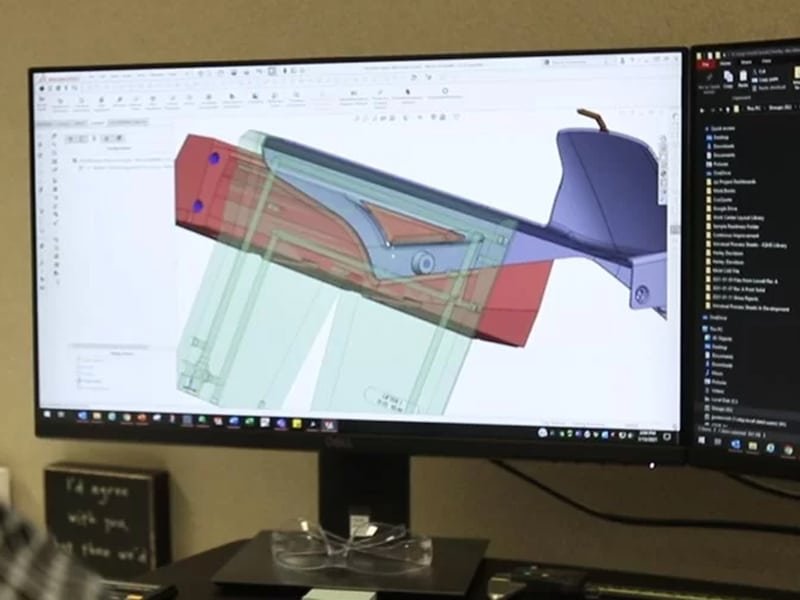
Considerations of Design for Manufacturing and Assembly
Several factors influence DFM (Design for Manufacturing), determining how efficiently a product can be produced while maintaining quality, cost-effectiveness, and performance. Here are the key considerations:
1. Manufacturing Process Selection
The choice of injection molding, CNC machining, die casting, or 3D printing affects design constraints such as tolerances, part complexity, and material requirements.
Each process has limitations on wall thickness, draft angles, and minimum feature sizes that impact manufacturability.
2. Material Properties
Different materials (plastics, metals, composites) have varying shrinkage rates, strength, thermal resistance, and machinability, all of which impact DFM analysis. High-performance materials may offer superior properties but could be difficult to process or require specialized equipment.
3. Part Geometry and Complexity
Simpler designs are easier and cheaper to manufacture, while complex shapes, undercuts, and thin-walled structures may require advanced tooling or multi-step processes. Sharp corners, deep cavities, and excessive detailing can lead to longer production cycles, increased costs, and higher defect rates.
4. Tolerances and Dimensional Accuracy
Tight tolerances increase manufacturing difficulty, requiring high-precision machining or molding, which can drive up costs. DFM aims to balance design precision with manufacturability, allowing for looser tolerances where possible without sacrificing functionality.
5. Tooling and Mold Design
In injection molding and die casting, mold design significantly affects cycle time, part consistency, and production cost. Features such as gates, runners, cooling channels, and ejector pin placements influence how efficiently a part is produced.
6. Assembly Considerations
Minimizing the number of parts reduces assembly time and the risk of misalignment or defects. Design choices like snap-fit connections, self-locating features, and modular components improve manufacturability.
7. Production Volume
High-volume production favors automated, high-efficiency manufacturing methods, whereas low-volume production may require custom machining or manual assembly. DFM should account for scalability—ensuring the design can transition from prototyping to mass production without major redesigns.
8. Manufacturing Costs
Material, tooling, labor, and machine time all contribute to overall cost. A well-optimized DFM design reduces scrap rates, cycle times, and post-processing requirements, leading to lower expenses.
Read the 12 Tips to Reduce Injection Molding Cost
9. Regulatory and Industry Standards
Products in industries like medical, aerospace, and automotive must meet strict safety, material, and performance regulations. DFM ensures compliance with ISO, FDA, or other industry standards while maintaining manufacturability.
10. Environmental and Sustainability Factors
Recyclability, material waste, and energy efficiency are increasingly critical in modern manufacturing. Selecting eco-friendly materials, reducing excess material use, and optimizing production processes contribute to sustainable design for manufacturability.
Tolerance and Design for Assembly
Tolerance in Design for Manufacturing (DFM)
Tolerance refers to the acceptable variation in part dimensions during manufacturing. It is a key factor that affects both product performance and manufacturing cost. In DFM, tight tolerances are often avoided unless absolutely necessary, as they increase the complexity of manufacturing and the risk of defects. Here’s how tolerance affects DFM:
- Tight Tolerances Increase Complexity: Parts with strict dimensional requirements demand high-precision manufacturing techniques such as CNC machining, which increases both time and cost.
- Loose Tolerances Can Reduce Costs: Allowing for slight variations in the dimensions of a part can significantly reduce manufacturing costs, particularly when using processes like injection molding or casting, which are less tolerant of high precision.
- Balancing Tolerances with Functionality: The key is to optimize tolerances—only apply tight tolerances where they are critical for the part’s functionality while relaxing them where possible without sacrificing quality.
Design for Assembly (DFA)
Design for Assembly (DFA) focuses on minimizing the complexity and cost of assembling a product by simplifying the design of individual components. The goal is to design parts in a way that minimizes the number of parts, the need for specialized tools, and the amount of labor required during assembly. Here’s how DFA works in conjunction with tolerance:
- Simplified Part Count: Fewer parts reduce assembly complexity, lowering labor costs, part handling, and the risk of errors. For example, using snap-fit connectors or integrating multiple functions into a single part can reduce the number of components.
- Easy-to-Handle Parts: Parts with consistent and compatible tolerances are easier to align and assemble, requiring less effort from operators and improving the assembly process. Parts that can be automatically oriented or self-locating also streamline assembly.
- Minimizing Fasteners and Adhesives: Snap-fit designs, self-locking parts, and interference fits can eliminate or reduce the need for fasteners like screws or nuts, simplifying both assembly and manufacturing.
- Design for Assembly Guidelines: Implementing best practices like designing parts with clear assembly direction, reducing the need for manual handling, and ensuring that parts fit together without excessive force, can help lower costs and time during assembly.
The Relationship Between Tolerances and DFA
- Tolerance Impact on Assembly: If parts are manufactured with inconsistent tolerances, it can lead to difficulty in assembly, requiring manual adjustments, more specialized tools, or even part rejection. Parts with tight tolerances need to be carefully designed to ensure that they fit together easily during assembly.
- DFM and DFA Synergy: DFM can help by ensuring that part designs are optimized for easy manufacturing, reducing the need for stringent tolerances, while DFA aims to make the assembly process quick, efficient, and error-free by simplifying parts and minimizing assembly steps. These principles work together to reduce overall production costs.
Learn our assembly solution for manufacturing.
Conclusion
Incorporating Design for Manufacturing (DFM) principles into the product development process is critical for ensuring that products are manufacturable, cost-effective, and meet quality standards. Whether you’re looking to refine your designs or tackle complex manufacturing challenges, implementing DFM is a proven strategy to help you achieve better outcomes, faster time-to-market, and improved cost-effectiveness.
If you’re ready to streamline your product design and manufacturing processes, get DFM with us. Our expert team is equipped to guide you through every step, ensuring that your design meets the highest standards of efficiency, quality, and manufacturability.
FAQ
While DFM analysis may require an upfront cost, it ultimately saves money by preventing design flaws, reducing material waste, and optimizing production efficiency. At Erye, we provide DFM reports for free, ensuring you get expert insights without additional expenses.
DFM shortens product development by catching manufacturing problems early. Bringing manufacturing experts into the design process from the start means fewer costly redesigns later. Simpler, easier-to-build designs and choosing the right manufacturing process upfront also reduce wasted time. Finally, DFM makes prototyping and the transition to full production much smoother, avoiding delays caused by manufacturing surprises.
DFM lowers manufacturing costs by streamlining the entire production process. Simpler designs with fewer parts mean less material used and quicker assembly. Choosing the right manufacturing process from the start avoids costly rework and delays. DFM also optimizes material use and minimizes waste, further reducing expenses. In essence, DFM makes production smoother, faster, and more efficient, all of which contribute to lower overall costs.

